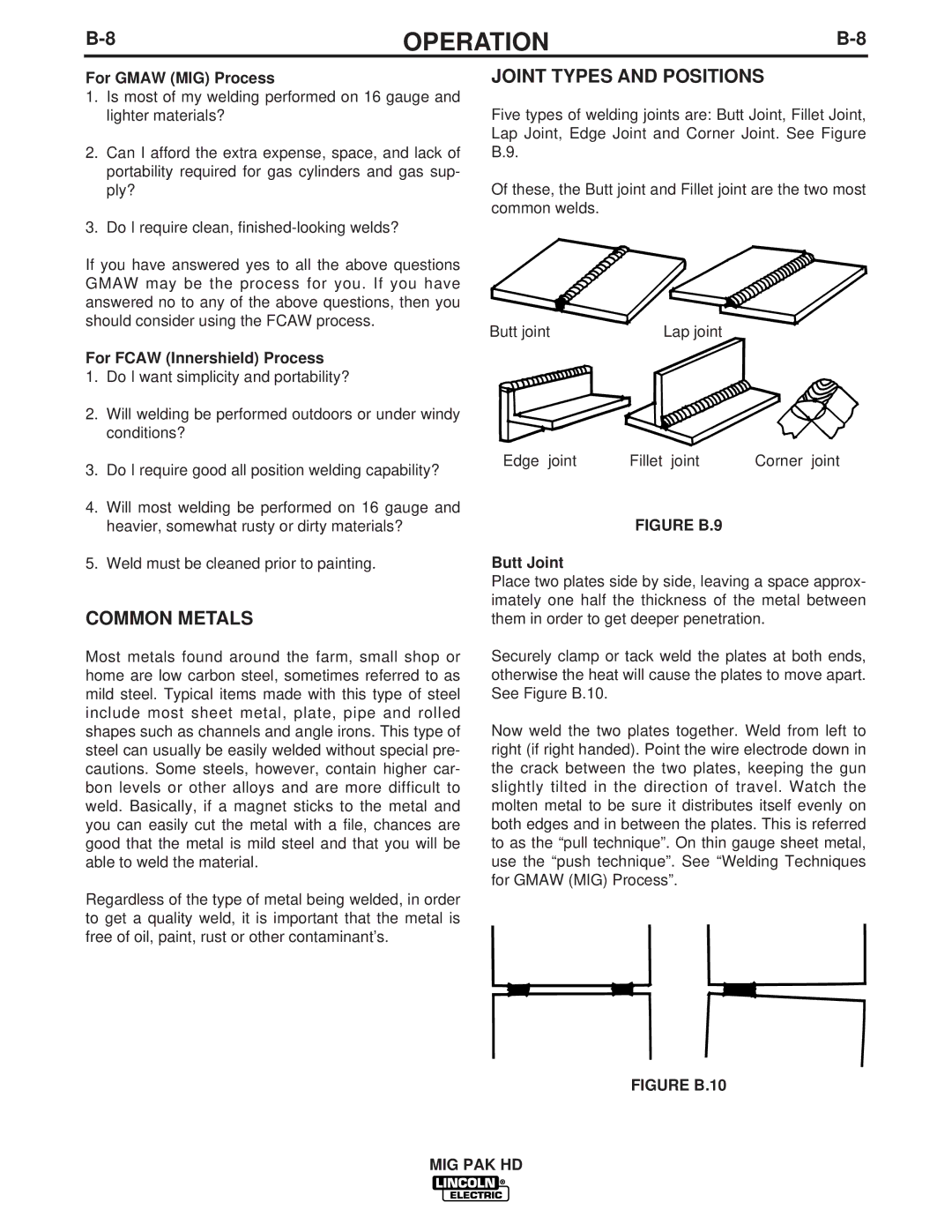IM822 specifications
The Lincoln Electric IM822 is a cutting-edge multi-process welding machine that is making waves in the welding industry for its advanced capabilities and user-friendly features. Known for its versatility, the IM822 supports a variety of welding processes including MIG, TIG, and stick, accommodating a wide range of applications in both industrial and commercial settings.One of the standout features of the IM822 is its inverter technology, which enhances both performance and efficiency. This inverter-based system allows the welder to output a stable arc, even in fluctuating input power conditions, making it ideal for use on job sites with inconsistent power supplies. The lightweight and compact design of the IM822 are direct benefits of this inverter technology, allowing for portability without sacrificing power.
The IM822 also boasts an impressive duty cycle, which allows for prolonged use without overheating. This characteristic is crucial for professional welders who require consistent, high-quality welds over extended periods. Additionally, it is equipped with an easy-to-read digital display that presents key information such as voltage and amperage settings, giving operators precise control over their work.
User-friendly interface is another hallmark of the Lincoln Electric IM822. The machine comes with intuitive controls that make it easier for both novice and experienced welders to navigate through settings quickly. With preset programs, users can select the most suitable parameters for specific materials and thicknesses, thereby enhancing productivity and reducing setup time.
Moreover, the IM822 excels in providing versatile welding capabilities, allowing it to handle various materials, including stainless steel, aluminum, and mild steel. The machine's robust construction further ensures durability, making it a reliable tool that withstands the rigors of demanding work environments.
Incorporating safety features such as thermal overload protection and an automatic shut-off system, the IM822 promotes safe operation, minimizing the risk of accidents. With a history of quality and innovation backing it, Lincoln Electric has positioned the IM822 as a go-to choice for welders seeking a modern solution that doesn't compromise on power or usability.
In conclusion, the Lincoln Electric IM822 combines advanced inverter technology, user-friendly operation, and robust welding capabilities, making it an excellent investment for professionals in the welding field. Whether for fabrication, repair, or maintenance applications, the IM822 stands out as a versatile and dependable welding solution.

